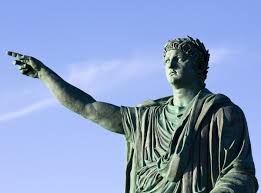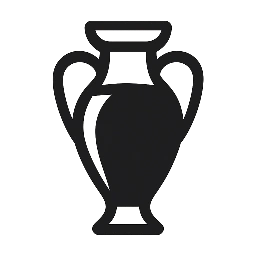Your basket is currently empty!
Introduction
The image of Emperor Nero calmly playing music while flames consumed the city of Rome is one of the most enduring legends in history. It’s a dramatic story—one that paints Nero as a heartless ruler more interested in art than his people’s suffering. But how much of it is true? Like many tales from ancient times, the real story is far more complex.
Where the Legend Came From
The tale of Nero “fiddling” during the Great Fire of Rome in 64 CE didn’t originate at the time of the fire itself. It was written down decades later by Roman historians like Tacitus, Suetonius, and Cassius Dio. These writers were openly hostile to Nero and portrayed him as cruel, erratic, and obsessed with his own image.
Tacitus mentions that Nero may have sung a song about the fall of Troy as Rome burned, but he never says anything about an instrument. Suetonius takes it further, describing Nero watching the fire from a high tower while singing in full theatrical costume. Cassius Dio, writing even later, likely helped shape the modern version of the story into what we now picture: a ruler playing music while chaos unfolds.
What’s Wrong With the Story?

First off, the idea that Nero played a fiddle or violin is simply impossible—those instruments didn’t even exist in the 1st century. The closest match would have been a lyre, a small harp-like instrument used in Greek and Roman times. Nero was known to be a skilled lyre player and singer. He performed in public, which scandalized the Roman elite, who believed such behavior was beneath an emperor.
There’s also the issue of location. Most sources agree that Nero wasn’t even in Rome when the fire began. He was at his villa in Antium, about 50 kilometers away. As soon as he heard about the fire, he rushed back to the city, opened his palaces to the homeless, and arranged food and shelter for the victims. Hardly the actions of a detached ruler.
Why the Myth Stuck
Despite these facts, the legend persisted. Part of the reason is Nero’s own personality. He was theatrical, eccentric, and obsessed with the arts. After the fire, he used large areas of the destroyed city to build his luxurious palace, the Domus Aurea—his “Golden House.” This made people suspicious that he had wanted the fire to happen, or at least took advantage of it. To deflect blame, Nero accused the Christians of starting the fire, leading to one of the earliest persecutions in Christian history.
All of this made him an easy target for scandal, exaggeration, and mythmaking.
Conclusion: A Story That Became a Symbol
So, did Nero really fiddle while Rome burned? No. The instrument is wrong, the timeline doesn’t add up, and the evidence suggests he tried to help. But the myth remains powerful. It captures the idea of a leader out of touch with reality, more concerned with art and ego than with responsibility.
In that sense, the legend has outlived the facts—not because it’s accurate, but because it speaks to a deeper truth about how people perceive leadership in times of crisis. And in the case of Nero, perception became history.
Explore more historical intrigues facts on our Legends and Myths site.

